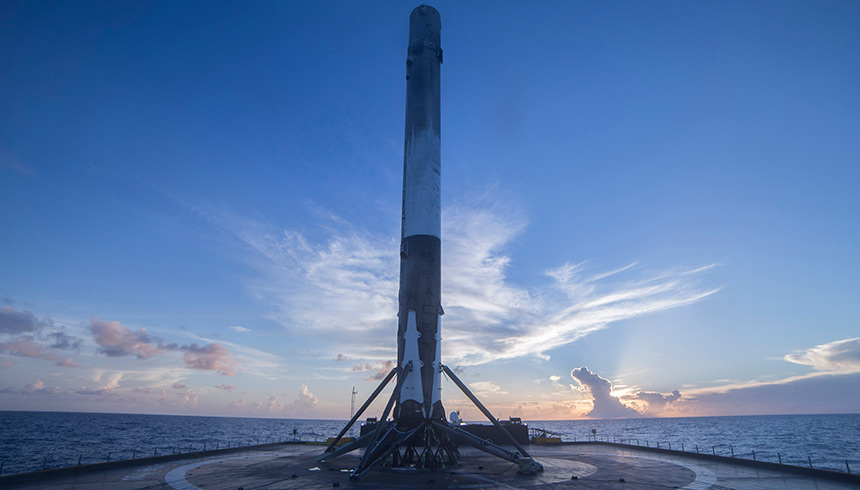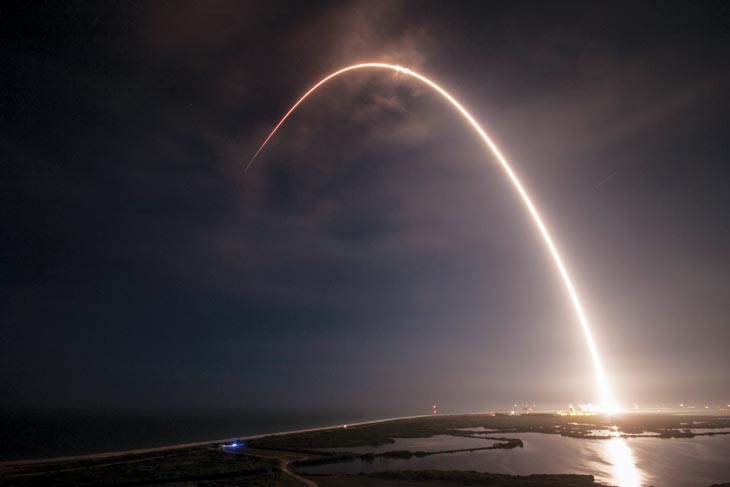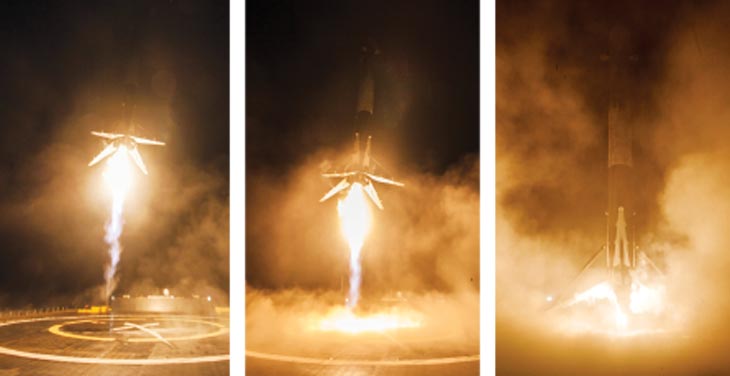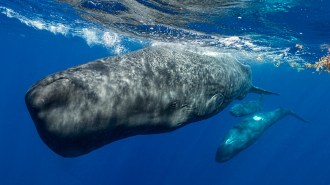Rise of reusable rockets signals a new age of spaceflight
Successful landings by SpaceX, Blue Origin raise the prospect of cheaper, more efficient rockets

ROCKETS RISING On August 14, aerospace company SpaceX landed a section of its Falcon 9 rocket on a sea barge in the Atlantic. The event marked the fourth such sea success, along with two ground landings.
SpaceX







